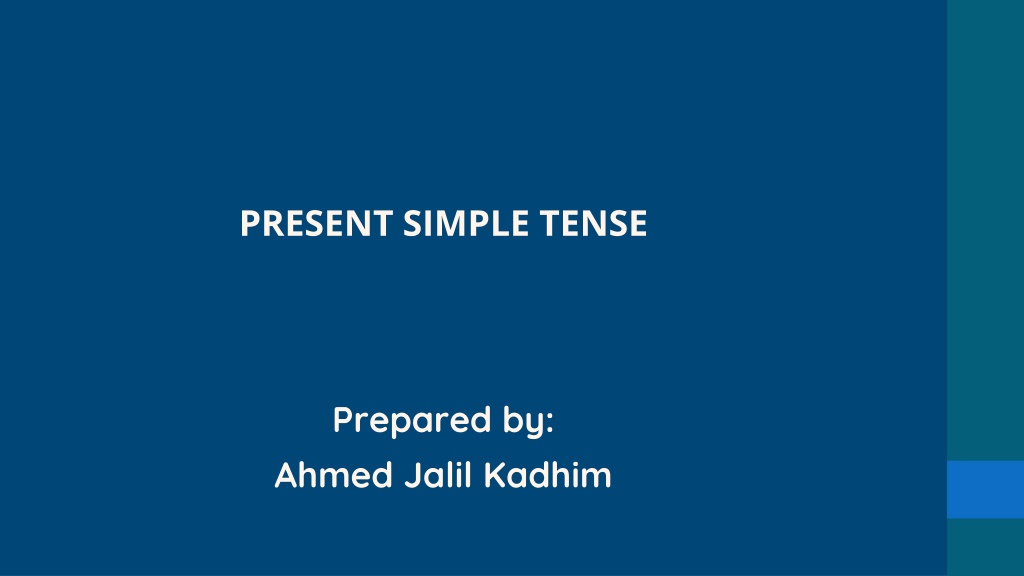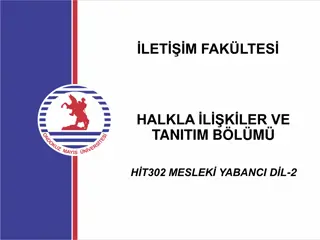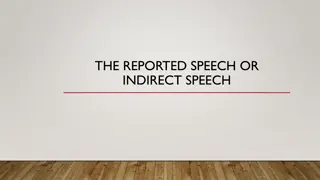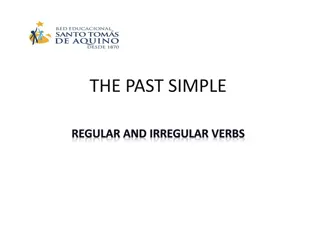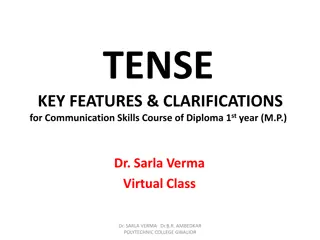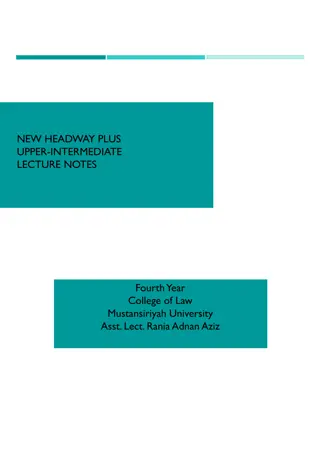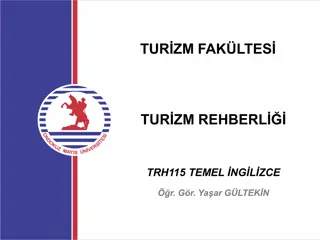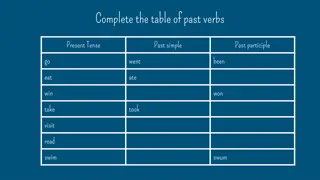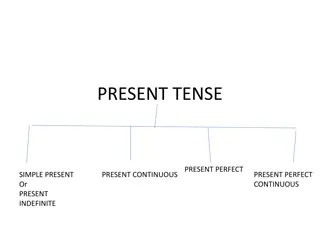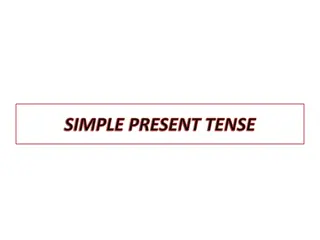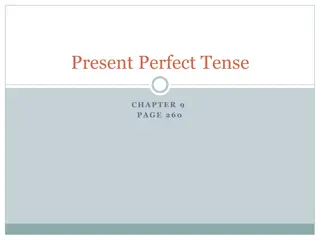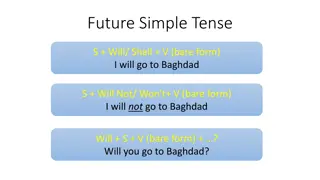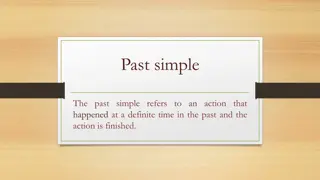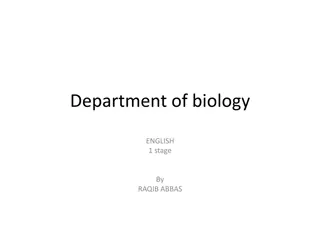PRESENT SIMPLE TENSE
This resource delves into the usage of the present simple tense, covering habits, unchanging situations, general truths, and fixed arrangements. Learn about adverbials, examples, verb conjugation, negatives, questions, and more.
Download Presentation

Please find below an Image/Link to download the presentation.
The content on the website is provided AS IS for your information and personal use only. It may not be sold, licensed, or shared on other websites without obtaining consent from the author. Download presentation by click this link. If you encounter any issues during the download, it is possible that the publisher has removed the file from their server.
E N D
Presentation Transcript
PRESENT SIMPLE TENSE Prepared by: Ahmed Jalil Kadhim
The present simple tense is used to describe habits, unchanging situations, general truths, and fixed arrangements. Present Simple Tense
The following adverbials are used with the present simple tense: Always usually regularly every morning/evening/night/ afternoon, often sometimes occasionally never
Examples: 1.Peter goes to the college by bus. 2.My friends play football every day . Routines, habits 3.I drink coffee every morning. 4. I have two cats and a dog. Un changing situations 5. We like animals.
6. The sun rises in the east. General truths 7.The earth is round. 8. the train leaves at 6:30. 9.The lectures start at 8:30. Fixed arrangements.
Simple Present Tense With.. - He eats an ice cream. He / She / It / Singular Subject - She washes the dishes. - The bird flies in the sky. Add -s / -es /-ies
Simple Present - They catch the fish. Tense With.. - You buy a T-shirt. They / We / You / I / Plural Subject - We write a story. - The students study English. Don't Change Verb!
Negative: 1. I don t like camping. 2. They don t play tennis. 3. Merry doesn t eat fish. 4. She doesn t carry the box. NOTE: Do is used with (I, we, they, you, plural names) Does is used with singular subject (he, she, it).
Questions: In the case of question put the auxiliary verb before the subject of the sentence. Examples: 1. Do you go swimming? 2. Does the manager go away? 3. Does she watch television?
DO as required: 1. Jack (live) in Manitoba. (correct) 2. He (be/not) a fireman. (correct). 3.He gets up early every day. (question) 4.His wife has a small shop. (negative) 5.They (not/like) their life. (correct) 6.They (be) always busy. Answers: 1.lives 2.Is not 3.Does he get up early? 4.His wife doesn t have a small shop. 5.don tlike 6. are
